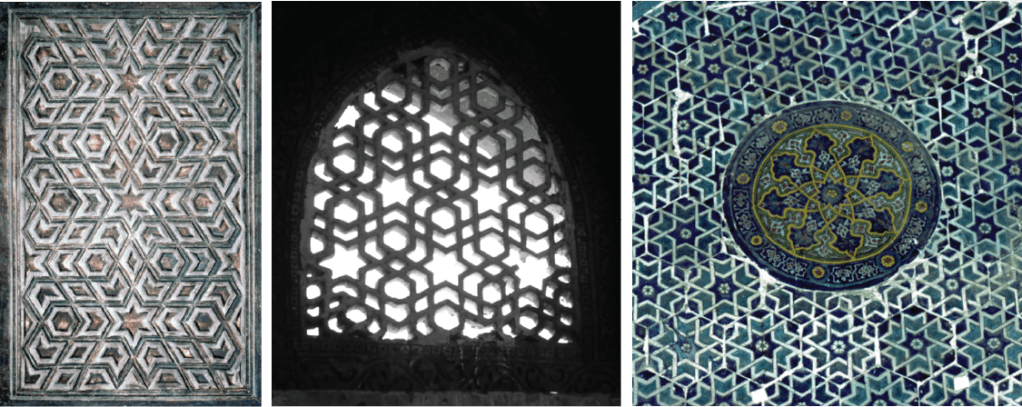This week, we’re tackling a six-fold star patterns that shows up in Islamic monuments across the world, from the 9th century Mosque of Ibn Tulun in Egypt to the 15th century Shakh-i-Zindeh complex in Uzbekistan and the Eski Mosque in Turkey.

This week, we’re tackling a six-fold star patterns that shows up in Islamic monuments across the world, from the 9th century Mosque of Ibn Tulun in Egypt to the 15th century Shakh-i-Zindeh complex in Uzbekistan and the Eski Mosque in Turkey.

Once you’ve figured out a few geometric basics, you’re ready to learn all about pathways: those lines that go over and under each other to create a three-dimensional effect.

Drawing pathways is a labor of love, but – to me – worth the extra work when you’re playing with a design and want to emphasize the lines rather than the shapes.
Continue readingA friend recently shared a picture with me from a visit they made to The Alhambra in Granada, Spain, a few years ago.

After playing with it for a few hours, I fell in love with this deceptively-simple rosette.

You are no doubt an excellent constructor of four- and six-folded bases by now. It’s time to move on to something just a bit trickier: five-fold patterns. Constructing a five-fold base can be infuriating, but with a little practice, you’ll figure it out in no time. Don’t
You’ll notice that the instructions here are repetitive up until a point; this is so that anyone can start on this page without having to reference anything else.
Continue readingNow that you’ve learned how to make a six-fold model, you’re just a few steps away from turning your mother circle into a four-fold foundation. Four-fold patterns often contain shapes like squares, diamonds, octagons, and wonky forms with curvy lines.
You’ll notice that the instructions here are repetitive up until a point; this is so that anyone can start on this page without having to reference anything else.
Continue readingIn August, thanks to an invitation my pal, Nirja, I started learning Islamic Geometry. We’ve been taking free classes on Wednesday mornings with the Prince Foundation School of Traditional Arts and supplementing our bi-weekly classes with all the youtube lessons we can find.
I’ve spent the past week figuring out how to translate my ruler-and-compass drawings to a digital format so that I can keep track of all the designs I’ve learned. Up first: this six-fold hammerhead pattern that I learned during my first class back in August.

It shows up in Syria and again – a few years later – in Spain.
